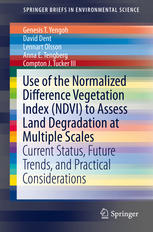

Most ebook files are in PDF format, so you can easily read them using various software such as Foxit Reader or directly on the Google Chrome browser.
Some ebook files are released by publishers in other formats such as .awz, .mobi, .epub, .fb2, etc. You may need to install specific software to read these formats on mobile/PC, such as Calibre.
Please read the tutorial at this link: https://ebookbell.com/faq
We offer FREE conversion to the popular formats you request; however, this may take some time. Therefore, right after payment, please email us, and we will try to provide the service as quickly as possible.
For some exceptional file formats or broken links (if any), please refrain from opening any disputes. Instead, email us first, and we will try to assist within a maximum of 6 hours.
EbookBell Team

4.1
20 reviewsThis report examines the scientific basis for the use of remotely sensed data, particularly Normalized Difference Vegetation Index (NDVI), primarily for the assessment of land degradation at different scales and for a range of applications, including resilience of agro-ecosystems. Evidence is drawn from a wide range of investigations, primarily from the scientific peer-reviewed literature but also non-journal sources. The literature review has been corroborated by interviews with leading specialists in the field.
The report reviews the use of NDVI for a range of themes related to land degradation, including land cover change, drought monitoring and early warning systems, desertification processes, greening trends, soil erosion and salinization, vegetation burning and recovery after fire, biodiversity loss, and soil carbon. This SpringerBrief also discusses the limits of the use of NDVI for land degradation assessment and potential for future directions of use.
A substantial body of peer-reviewed research lends unequivocal support for the use of coarse-resolution time series of NDVI data for studying vegetation dynamics at global, continental and sub-continental levels. There is compelling evidence that these data are highly correlated with biophysically meaningful vegetation characteristics such as photosynthetic capacity and primary production that are closely related to land degradation and to agroecosystem resilience.